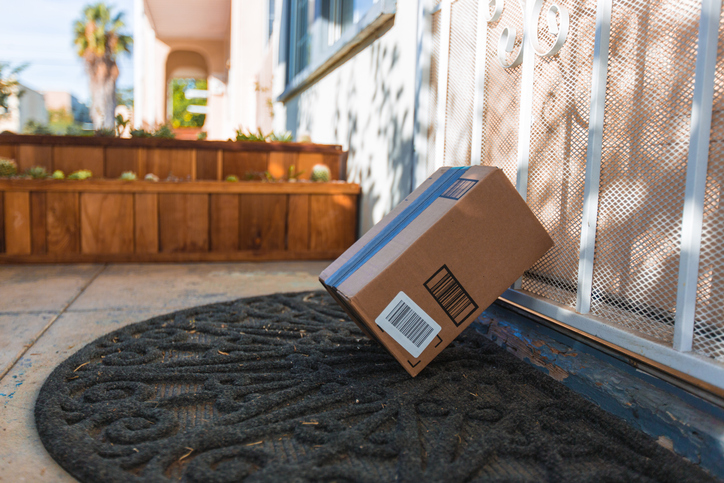Editor’s note: Hadar Paz is CEO and co-founder of AI-powered chat solution firm Powerfront, Los Angeles.
A record-breaking 9,300 brick-and-mortar stores were shut down in 2019 – a 59% increase over 2018, creating concern across the retail ecosystem, leading many to name the period a “retail apocalypse.”
Yet nothing could have prepared the industry – or the world – for what was to come just months later. The COVID-19 pandemic has completely up-ended the way people live their lives. With cities rolling out shelter-in-place orders, and Americans ordered to avoid congregating in groups larger than 10 people, many retailers like Macy’s, Glossier, Patagonia and Sephora faced the difficult decision to temporarily close storefronts. At the time of writing, 75 million Americans are in some degree of home isolation, making shopping for non-essential items like clothing almost obsolete and grinding an entire industry to a halt.
As a result, there will likely be more store closures to come. One by one, retailers large and small will be forced to create a crisis strategy to deal with dwindling traffic to brick-and-mortar stores. How should brands tackle these challenging times?
We must look closely at how companies responded to the retail apocalypse last year, which resulted in major outlets like Opening Ceremony, Express, Papyrus and J.C. Penney to shutter a concerning number of stores. But a select group of retailers – stores like Target – quickly pivoted and avoided this fate. How? Not by giving in to panic, but by embracing an aggressive digital mode, doubling down on e-commerce and utilizing data and behavioral patterns to focus on giving online customers what they need. 
E-commerce was a force to be reckoned with long before this crisis and most retailers have already begun to focus on online customers: The Washington Post reported that the average U.S. household spent $5,200 online in 2018, nearly a 50% increase from 2013. But there are a few key differentiating factors between retailers that succeeded or bounced back from being on the brink of bankruptcy during last year’s retail crisis and those that did not do well.
Retailers like Zumiez and Target reformatted stores into small, localized distribution centers, cutting down the waiting period for consumers who buy online. Others, such as Casper and Carvana, integrated digital and in-store experiences and utilizing storefronts to offer more experiential retail events. Note the two common threads: the more apparent being a shift to focusing on e-commerce and the more nuanced but even more critical focus on enhancing customer experience.
Below are six things brands did to enhance the e-commerce experience:
1. They translated the physical customer relationship experience online.
 Customers want a personal relationship with their favorite brands and they expect that personal experience regardless of which channel they are shopping. Some brands went out of their way to create a CX experience that rivaled that of the face-to-face experience. During this pandemic, retailers that can continue to provide their customers with something that goes above and beyond will fare much better than stores that continue to do business as usual. Ask yourself, how can I re-create the same customer experience that my clients are used to face-to-face?
Customers want a personal relationship with their favorite brands and they expect that personal experience regardless of which channel they are shopping. Some brands went out of their way to create a CX experience that rivaled that of the face-to-face experience. During this pandemic, retailers that can continue to provide their customers with something that goes above and beyond will fare much better than stores that continue to do business as usual. Ask yourself, how can I re-create the same customer experience that my clients are used to face-to-face?
2. They made a seamless digital to brick-and-mortar pipeline.
In 2019, successful retailers reconsidered strategies for how they integrated offline with online spaces. Some digital companies opened physical stores where folks could buy online and pick up their items, whereas others reduced their space and used stores as ship-to-store fulfillment centers, which created new opportunities. In fact, small-format stores saw a 5% year-over-year increase in sales. For example, Zumiez alleviated pressure on its warehouses, kept employees, maximized use of real estate and as a result was able to provide excellent service to customers. How can you reimagine your physical presence?
3. They differentiated themselves.
 If you’re well-known for apparel, why would you suddenly begin to offer home goods? Successful brands before the pandemic were laser-focused on their digital presence, studied which product pages their customers returned to most often and went after niche markets. Brands that did not survive expanded into a variety of departments and a hodgepodge of new products with little research suggesting consumers would actually find this assortment desirable. During this downturn, home in on your strengths instead of allowing panic to steer you off course and trying to offer everything.
If you’re well-known for apparel, why would you suddenly begin to offer home goods? Successful brands before the pandemic were laser-focused on their digital presence, studied which product pages their customers returned to most often and went after niche markets. Brands that did not survive expanded into a variety of departments and a hodgepodge of new products with little research suggesting consumers would actually find this assortment desirable. During this downturn, home in on your strengths instead of allowing panic to steer you off course and trying to offer everything.
4. They bet everything on digital.
Right now, most brands are relying heavily on their online presence to continue selling their products to customers who are hunkered down in their homes. In 2019, brands that seemed to be surviving the retail apocalypse invested correctly in their e-commerce strategy from the get-go. Brands that cut corners on digital budgets are likely unprepared for what’s to come. By planning ahead and strengthening your e-commerce presence, you’ll be in a stronger position post-COVID-19. There’s still time to double down on online CX.
5. They embraced risk through emerging technology.
Brands that won 2019 committed to providing the same level of white-glove service on their websites as inside their stores through emerging technology – particularly luxury brands like Gucci and Valentino. Amazon Lockers and RFID-based technology are great examples of this. By embracing all that technology has to offer, you’ll be better equipped to handle the rough waters ahead.
6. They retrained to avoid mass layoffs.
One gut-wrenching result of this pandemic are the mass layoffs happening across industries. However, this had already begun to happen in the retail sector. Successful brands retrained in-store staff for online customer service teams as they were already well educated on product information and creating a personal customer connection. This unified offline and online agent teams, reduced training times and let brick-and-mortar sales teams transition easily into online sales, with no need for mass layoffs.
Uncharted territory
The retail sector is in uncharted territory, and what you do now will impact what happens to your brand in the near future. By taking a look at how the industry has tackled challenges in the past – and what brands succeeded and what brands did not – you can prepare yourself and your brand for whatever comes your way.
